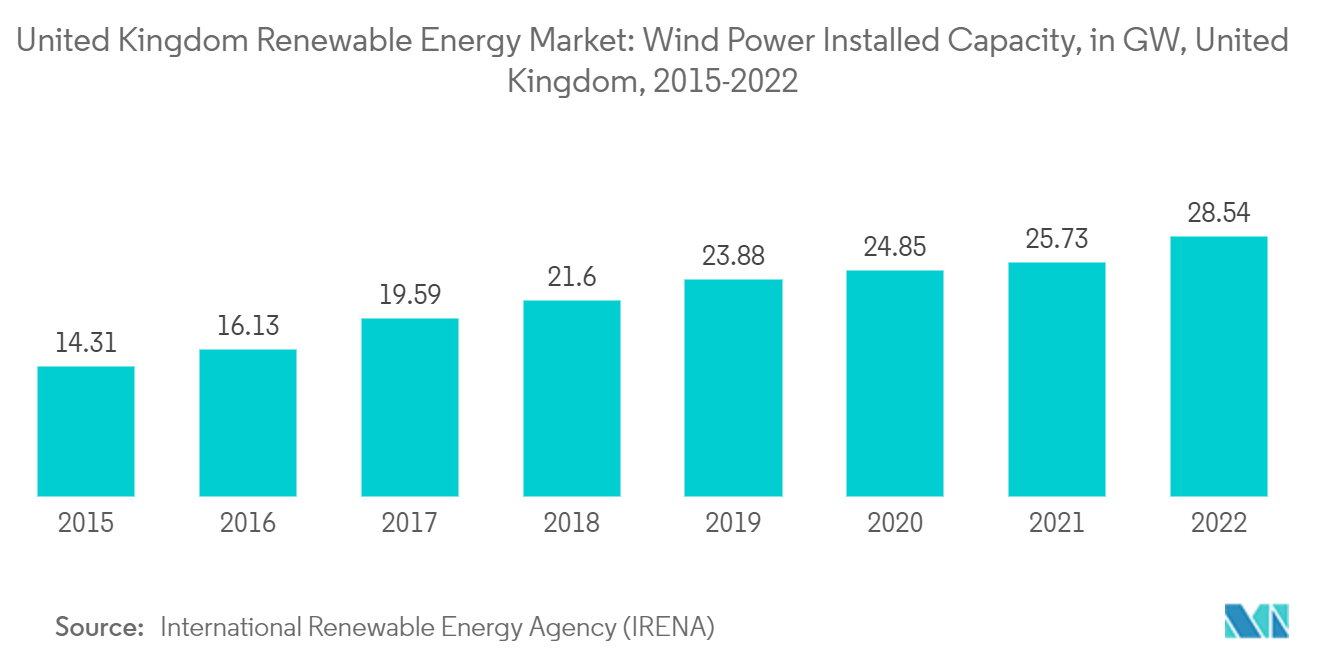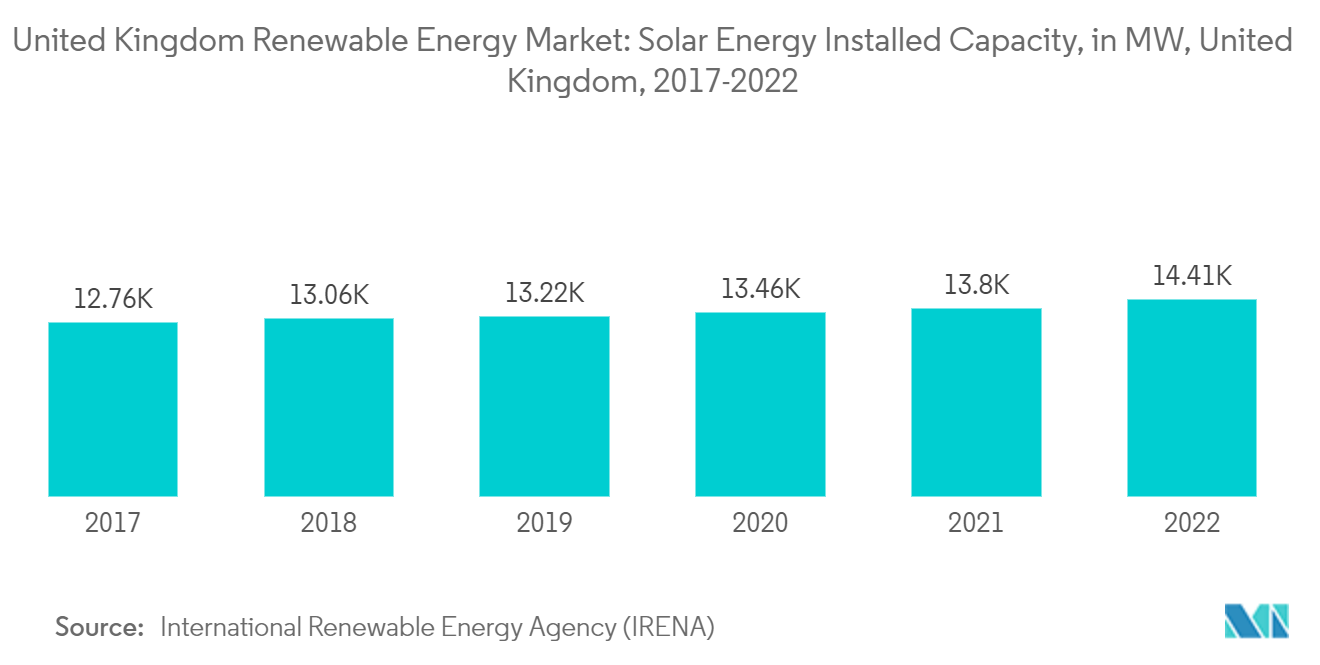Market Trends of United Kingdom Renewable Energy Industry
Wind Energy is Expected to Dominate the Market
- With the increasing need for a reliable, affordable, clean, and diverse electricity supply, the government and utilities nationwide are increasingly considering wind power. Moreover, with the country's unparalleled wind resources, ample opportunities exist to maximize wind energy development's economic and environmental benefits.
- The country's installed wind energy reached 52.42 GW in 2022, representing an increase from 48.89 GW in 2021. The United Kingdom is also one of the leading countries worldwide in offshore wind energy, with an installed capacity of more than 13.45 GW in 2022. With several ambitious projects already in development, the government aims to reach 20 GW by the end of 2030.
- In January 2022, Shell plc and Scottish Power Ltd. Joint ventures won bids to develop 5 GW of floating wind power in the United Kingdom. Both companies plan to build and operate two of the world's first large-scale floating offshore wind farms in the United Kingdom with a power generation capacity of 3 GW and 2 GW. Such projects are expected to aid market growth in the coming years.
- The country aims to expand the offshore wind sector to around 50 GW capacity by 2030. Wind turbines provided 32.4% of Britain's total electricity in the first quarter of 2023, which 3% is higher than the first quarter of 2022.
- Therefore, the high growth rate of wind energy makes the United Kingdom one of the renewable market leaders and drives toward a green future.

Uncertainties in Government Policies are Restraining the Market Demand
- The United Kingdom regulated the feed-in tariff, through which energy suppliers give payments if a property or organization generates its electricity using a renewable source like wind or solar.
- The United Kingdom government decided to reduce the subsidies for rooftop solar panels installed by 65%, leading to the slowest deployment of domestic solar seen under the FiT scheme in the country. Further, in March 2019, the government closed this scheme, which negatively affected the growth of the solar market in the United Kingdom.
- The total new installed solar energy capacity was only around 613 MW, which had been severely affected since 2022, and the cumulative installed solar power was around 14,412 MW in 2022. The solar feed-in tariffs had encouraged several homes to install solar PV systems on their rooftop. Although the government rolled out several other schemes to counter the adverse effects of removing the tariff on the market, such as the Smart Export Guarantee (SEG), the market is expected to attain a lower growth rate than before.
- Under the SEG scheme, although few companies, like Tesla and Social Energy, offer tariff rates above 5 p/kWh, major and well-established energy suppliers, such as EDF and EON, offer very few tariffs - below 3.5 p/kWh. There is also a chance that these companies can lower the tariff rates in the coming years. Therefore, the tariff prices offered under SEG are expected to remain uncertain during the forecast period compared to the FiT scheme.
- The United Kingdom government's policies and regulations are significant factors that will decide the future of the renewable energy market. The above factors can restrain the market growth in either way.


